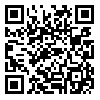Volume 8, Issue 3 (2020)
CLRJ 2020, 8(3): 129-153 |
Back to browse issues page
Download citation:
BibTeX | RIS | EndNote | Medlars | ProCite | Reference Manager | RefWorks
Send citation to:



BibTeX | RIS | EndNote | Medlars | ProCite | Reference Manager | RefWorks
Send citation to:
AHMADI M, Akbari B. Active Imagination, and symbol of “Ascension” in Abhar-al-Asheshqin, The Work of Roozbehan Baqli Shirazi. CLRJ 2020; 8 (3) :129-153
URL: http://clrj.modares.ac.ir/article-12-36193-en.html
URL: http://clrj.modares.ac.ir/article-12-36193-en.html
1- Allameh Tabataba'i University , massumahm@gmail.com
2- Tarbiyat Modares University
2- Tarbiyat Modares University
Abstract: (2701 Views)
The mystical literature is full of symbols, archetypes and schemes (symbol motors). The French philosopher and writer, Gilbert Durand believes that image is prior to reason, and, basically, all reasoning is based on imagination. In mystical literature, imagination and reason together create true images on the transcendental level. This is the "active imagination" generated in “Mundus imaginalis”. Through an analytical look at the images in Abhar-al-Asheshqin, the work of Roozbehan Baqli Shirazi, we have acquired a new cognition of his imaginative world; and via Gilbert Durand‘s “modeling of imagination", we have decoded the images received in the mystic mind of Roozbehan. For example, we have shown how the schemes of ascending, through symbols such as a “Bird” or a “Ladder”, soften the images of fear of mortality. Also the "positional schemes" of imagination have replaced themselves with "downward schemes" or "rhythmic schemes". So in Roozbehan’s imagination, the fear of death is either hidden within a romantic fate, or death is essentially devoid of fear. This is accomplished by passing from diurnal imagination, with a positive evaluation, toward nocturne imagination, or again, from a bipolar structure of imagination to a hybrid one.
Article Type: Original Research |
Subject:
Comparative study of literary texts with other fields of knowledge and knowledge such as philosophy, sociology of alcohatics and psychology
Received: 2019/09/4 | Accepted: 2020/09/21 | Published: 2020/09/21
Received: 2019/09/4 | Accepted: 2020/09/21 | Published: 2020/09/21
Send email to the article author
| Rights and permissions | |
 |
This work is licensed under a Creative Commons Attribution-NonCommercial 4.0 International License. |








